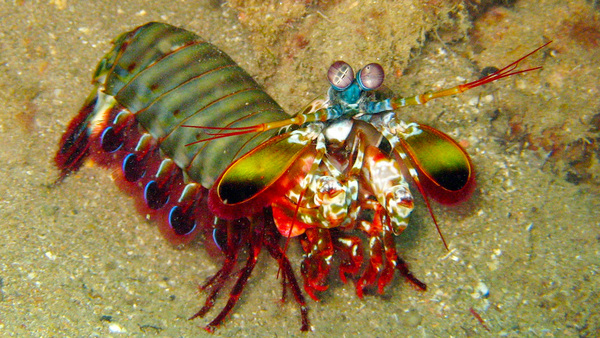The world is full of colors, but not every creature perceives them the same way. While humans are often amazed by the range of colors they can see, there are animals in the natural world whose visual systems are far superior. This article explores which animal sees the most colors, delving into the fascinating science of color vision, the species with advanced visual systems, and how their sight compares to ours.
To understand what makes animal vision remarkable, it's essential to start with human vision. Humans are trichromatic, meaning we have three types of cone cells in our eyes, each sensitive to red, green, or blue light. This combination allows us to perceive around 1 million distinct colors. However, our perception is limited to the visible spectrum of light, which ranges from red to violet.
The mantis shrimp is widely considered the animal with the most advanced color vision.
Number of Photoreceptors: Mantis shrimp have an astonishing 12–16 types of photoreceptors compared to the three in humans.

Color Spectrum: Their eyes allow them to detect ultraviolet (UV) light, polarized light, and a broader range of colors than humans can comprehend.
Functionality: Despite their advanced eye structure, recent studies suggest they might not perceive as many nuanced colors as humans but instead use their complex vision for survival, such as identifying mates or prey.
Many birds, including parrots and pigeons, possess tetrachromatic vision, which means they have four types of cone cells.
UV Vision: This extra cone allows them to see ultraviolet light, which is invisible to humans.
Applications: UV vision helps birds during foraging, as certain fruits and flowers reflect UV light. Additionally, plumage patterns visible only under UV light are crucial for mating displays.
Butterflies have up to 15 photoreceptor types, depending on the species.
Color Range: They see a wider spectrum of colors, including UV light, which helps them identify flowers and navigate their surroundings.
Specialization: Different butterfly species may have unique photoreceptors tailored to their ecological needs.
Reindeer have adapted to see ultraviolet light, enabling them to survive in the Arctic.
Applications: UV vision allows reindeer to detect predators, spot food, and navigate snowy landscapes, where UV light reflects intensely.
Animals with superior color vision have evolved these traits to meet specific survival needs. For instance:
Predation: UV vision allows predators to spot prey that reflects UV light.
Mating: Many species rely on vibrant or UV-reflective colors for courtship.
Navigation: Enhanced vision helps animals find food, shelter, or migrate effectively.
The habitats of these animals significantly influence their visual capabilities:
Mantis shrimp, living in shallow tropical waters, use their vision to distinguish between reef environments.
Birds use their tetrachromatic vision to forage in complex forests.
The simple answer is yes, some animals perceive a broader spectrum of light than humans. However, their perception of colors isn't necessarily "better" in the way we might imagine. For example:
Mantis shrimp detect a wide range of wavelengths but might not combine them into complex colors as humans do.
Birds and butterflies, on the other hand, likely experience a more vibrant and detailed world than we can comprehend.
Not all animals enjoy advanced color vision. Some species, such as dogs, are dichromatic and can only perceive blue and yellow. Similarly, cats have limited color perception but excel in low-light environments.
Animals like snakes rely on infrared detection rather than color vision, while others, such as sharks, might be completely colorblind.
The mantis shrimp is often considered the animal with the most advanced color vision due to its numerous photoreceptors.
Yes, many animals, such as birds, insects, and reindeer, can see UV light.
Humans are trichromatic, which limits us to a narrower spectrum of colors compared to animals like birds or mantis shrimp.
No, dogs are dichromatic, meaning they see shades of blue and yellow but not red or green.
The natural world offers a stunning array of visual abilities, with some animals capable of perceiving far more colors than humans. From the mantis shrimp’s unparalleled visual system to birds’ UV-sensitive eyes, these adaptations highlight the incredible diversity of life on Earth. While our human perception is limited, exploring how animals see the world deepens our appreciation for nature’s complexities. Next time you marvel at a rainbow, imagine how much more vibrant it might appear to a butterfly or a mantis shrimp.
animal tags: Birds
We created this article in conjunction with AI technology, then made sure it was fact-checked and edited by a Animals Top editor.